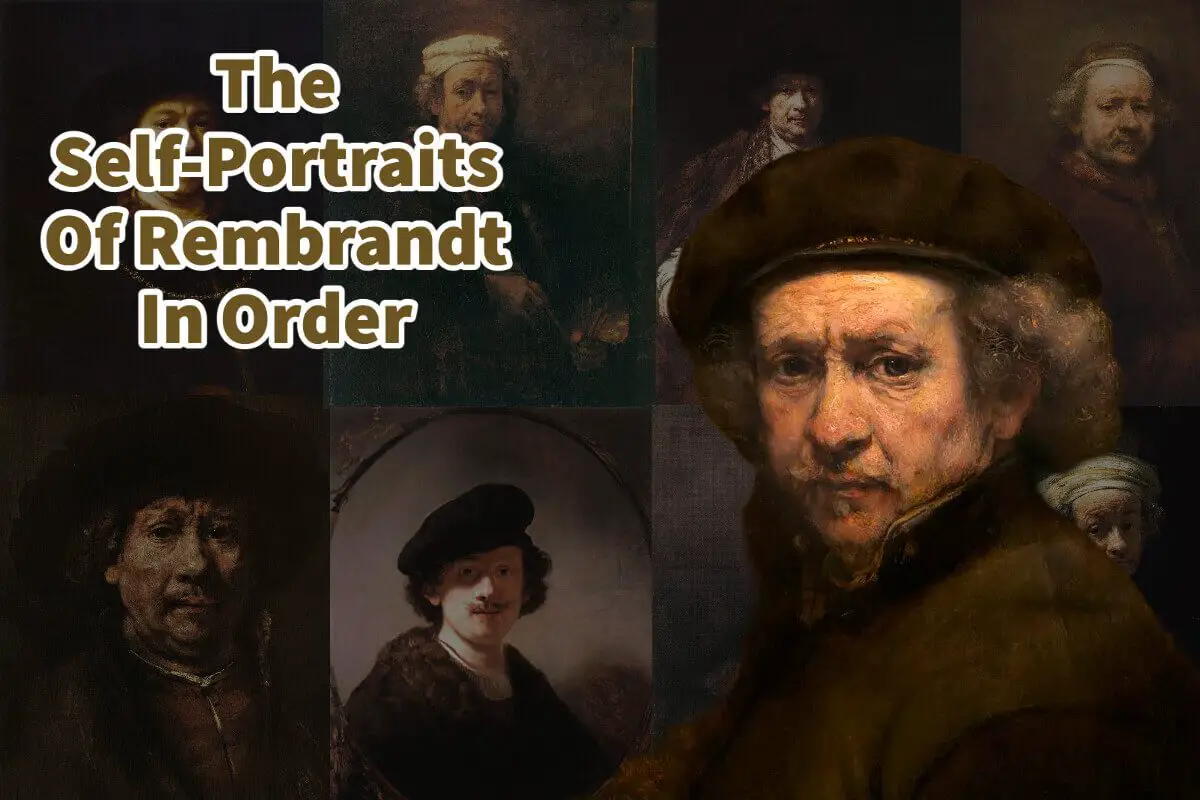The self-portraits of Rembrandt van Rijn stand as remarkable testaments to the artist’s ability to transform himself into various roles, capturing a range of emotions and narratives within his artwork.
Rembrandt’s self-portraits offer a captivating journey through his introspection, creativity, and deep understanding of the human experience. Each self-portrait unveils a new facet of Rembrandt’s artistic genius and invites viewers to connect with his art on a profound level. Join us as we explore the significance and symbolism behind the most significant self-portraits of Rembrandt in chronological order, witnessing the artist’s evolution and the stories he tells through his images and art.
Table of Contents
- About Rembrandt And His Self-Portraits
- Why Did Rembrandt Depict Himself So Frequently?
- 27 Major Rembrandt Self-Portaits
- Frequently Asked Questions
- Related Questions
About Rembrandt And His Self-Portraits
Rembrandt Harmenszoon van Rijn, born July 15, 1606, in Leiden, Netherlands, is widely regarded as one of the most influential painters and etchers in European art history. His mastery of light and shadow, ability to capture human emotions, and innovative approach to portraiture set him apart as a remarkable artist of his time.
One intriguing aspect of Rembrandt’s body of work is the vast number of self-portraits he created throughout his career. It is estimated that he produced over 90 self-portraits in various forms, including paintings, drawings, and etchings. This prolific output of self-portraits begs the question of why?
Why Did Rembrandt Depict Himself So Frequently?
There are many reasons why Rembrandt painted himself so frequently. Here are some of the most significant reasons;
Self-Portraits Were Convenient
One possible explanation is that self-portraits provided Rembrandt with a timely subject matter for exploration and experimentation. Using himself as a model, he had constant access to a willing subject who allowed him to study and refine his artistic techniques.
Rembrandt was known for his keen observation and desired to capture the human essence, and what better subject than himself to serve as a continuous source of inspiration and practice?
Simple Economic Factors And His Self-Portraits
Another reason behind Rembrandt’s penchant for self-portraits lies in the practicality and economic factors of the time. During the 17th century, commissioned portraits were in high demand, and by painting self-portraits, Rembrandt could create marketable works without relying on external patrons.
Self-Portraits Allowed Rembrandt Artistic Experimentation & Reflection
Additionally, self-portraits allowed him to experiment with different styles, techniques, and expressions, which could be applied to his commissioned portraits, enhancing his reputation as a versatile and skilled artist.
Furthermore, self-portraiture served as a means of self-reflection and self-exploration for Rembrandt. Through these introspective works, he delved into his psyche, capturing his physical likeness, emotional state, and the complexities of human experience.
The self-portraits become a window into Rembrandt’s inner world, revealing his thoughts, moods, and evolving perception of himself over time.
Rembrandt Used Self-Portraits To Explore Light And Shadow
In his self-portraits, Rembrandt explored the play of light and shadow, capturing the effects of aging and reflecting on the passage of time. These introspective works allowed him to examine his aging process, confront his mortality, and come to terms with the impermanence of life.
Each self-portrait became a mirror through which he could reflect on his existence and confront the existential questions accompanying the human condition.
Self-Portraits As A Form Of Self-Promotion
Lastly, Rembrandt’s self-portraits can be seen as a form of self-promotion and self-definition. As an artist operating in a competitive market, self-portraits allowed him to establish his identity and assert his individuality.
He showcased his artistic versatility by presenting himself in different roles, costumes, and expressions and solidified his reputation as a masterful painter.
Rembrandt’s extensive collection of self-portraits offers a multifaceted insight into his artistic genius and journey. The self-portraits served as a means of exploration, practice, economic viability, self-reflection, and self-promotion.
Through these self-portraits, Rembrandt not only left behind a remarkable artistic legacy but also provided future generations with a profound glimpse into the mind and soul of an exceptional artist.
27 Major Rembrandt Self-Portaits
Rembrandt’s self-portraits explore his ability to assume various roles and personas within his artwork. They showed him throughout his life and how he aged over time.
These self-portraits allowed him to delve into different characters, narratives, and emotions, showcasing his versatility as an artist.
Here are some of Rembrandt’s most significant self-portraits in order:
1. The Artist in his Studio – c. 1626
Oil on canvas, 25 x 32 cm
Museum of Fine Arts, Boston
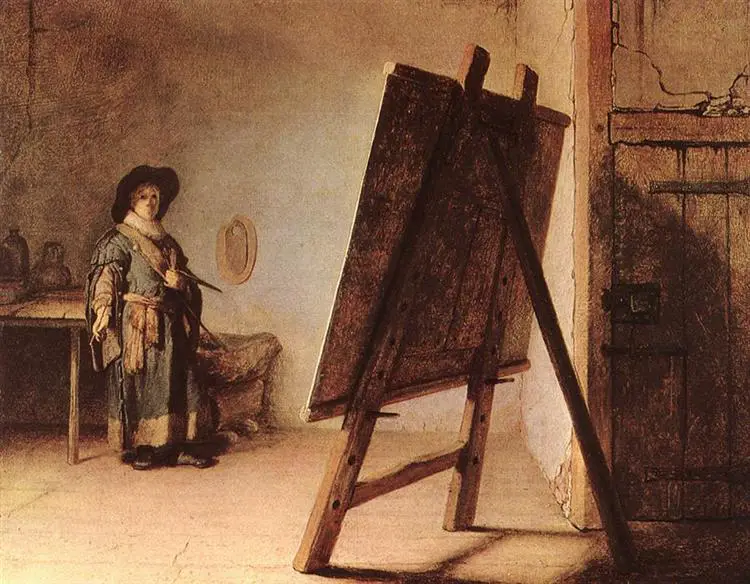
2. Self-Portrait – c. 1628
Oil on wood, 23 x 19 cm
Rijksmuseum, Amsterdam
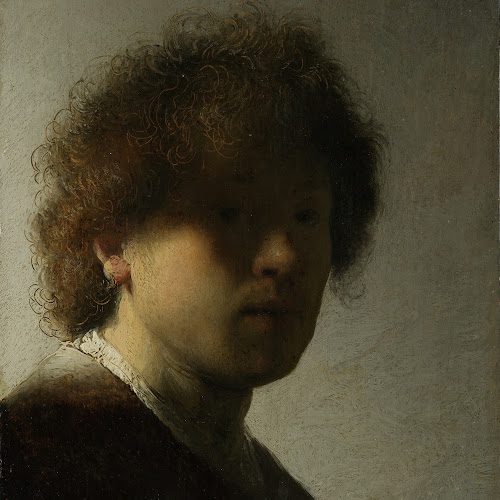
3. Self-Portrait – c. 1629
Oil on panel, 16 x 13 cm
Alte Pinakothek, Munich

4. Self-Portrait – c. 1629
Oil on wood, 44 x 34 cm
Museum of Art, Indianapolis
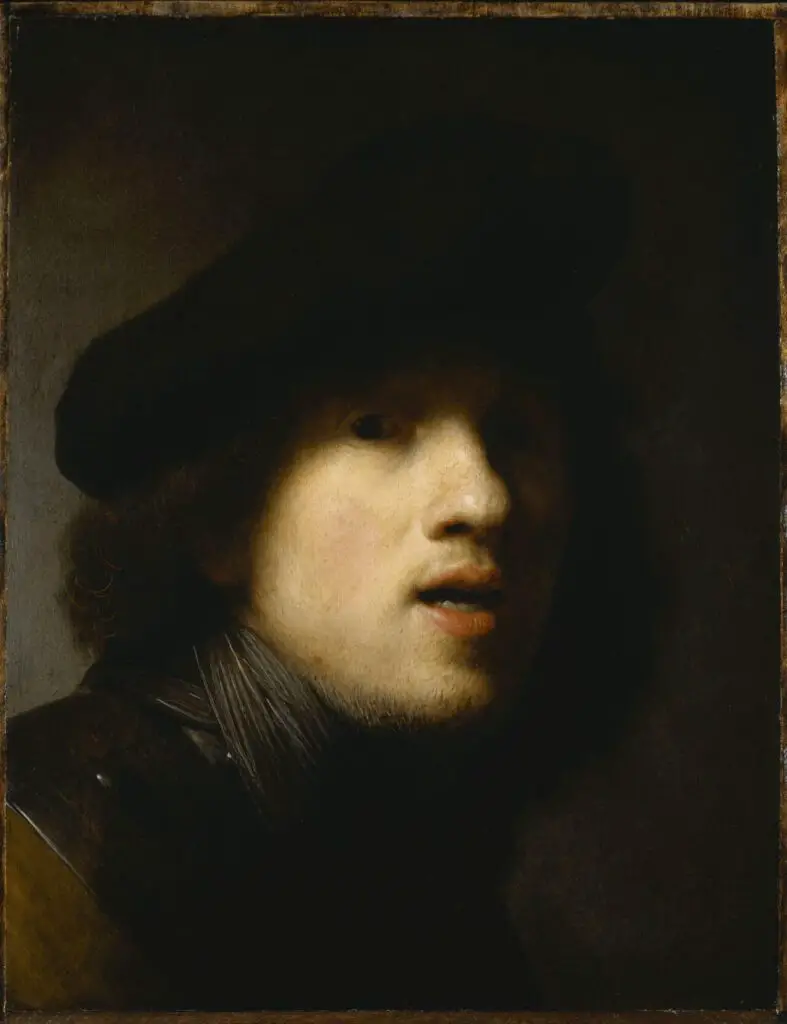
5. Self-Portrait with Lace Collar – c. 1629
Oil on canvas, 38 x 29 cm
Mauritshuis, The Hague
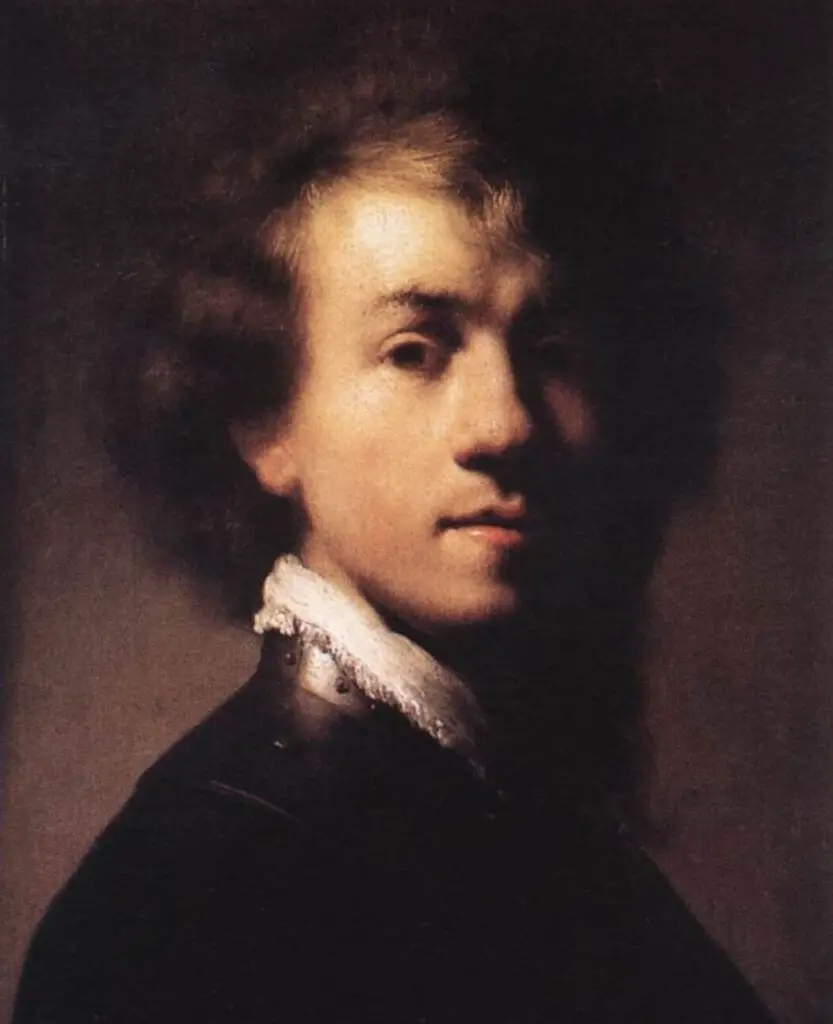
6. Self-Portrait with Gorget – c. 1629
Oil on panel, 38 x 31 cm
Staatliche Museen, Kassel
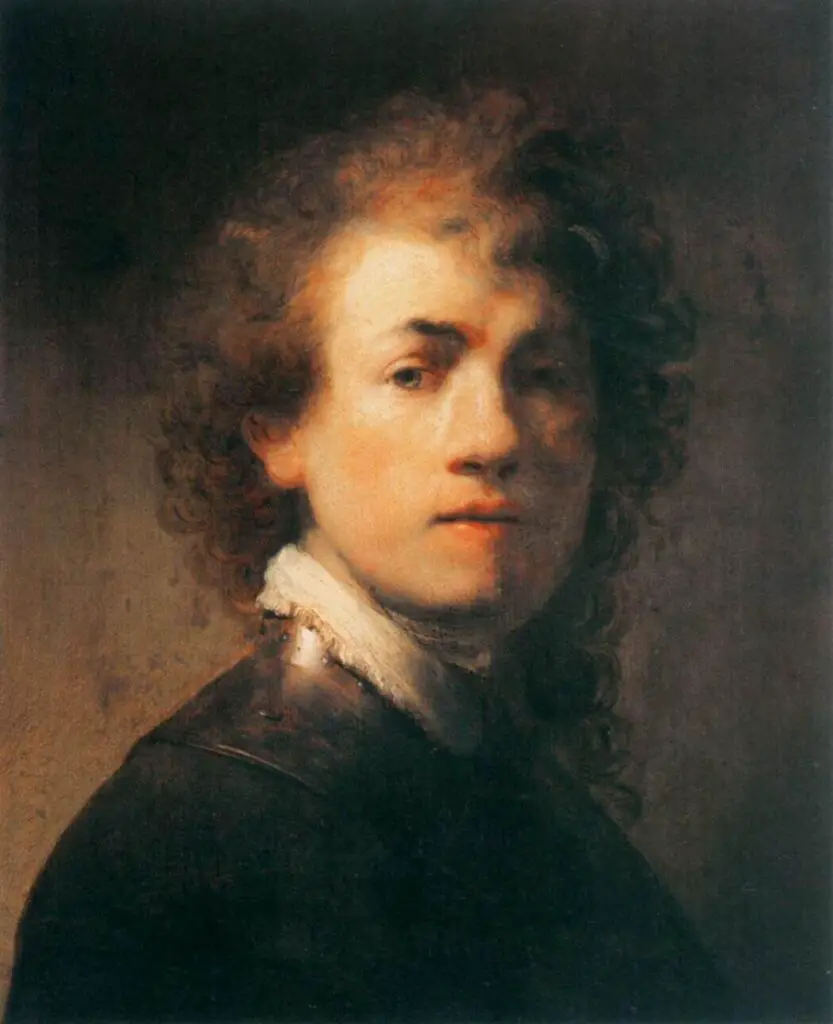
7. Self-Portrait – c. 1630
Oil on panel, 70 x 57 cm
Walker Art Gallery, Liverpool
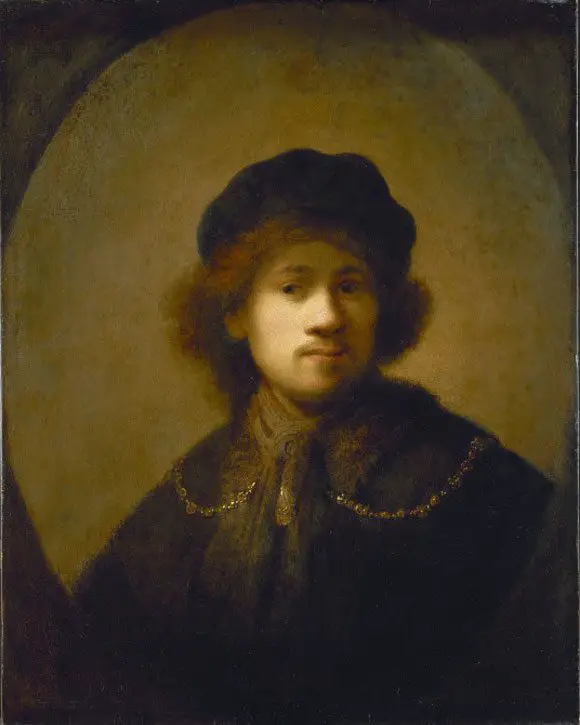
8. Self-Portrait in Oriental Costume with Poodle – c. 1631-33
Oil on panel, 67 x 52 cm
Musée du Petit Palais, Paris

9. Self-Portrait Wearing a Ruff and a Black Hat – c. 1632
Oil on oak panel, 22 x 16 cm
Private collection

10. Self-Portrait Wearing a Toque and a Gold Chain – c.1633
Oil on wood, 70 x 53 cm
Musée du Louvre, Paris
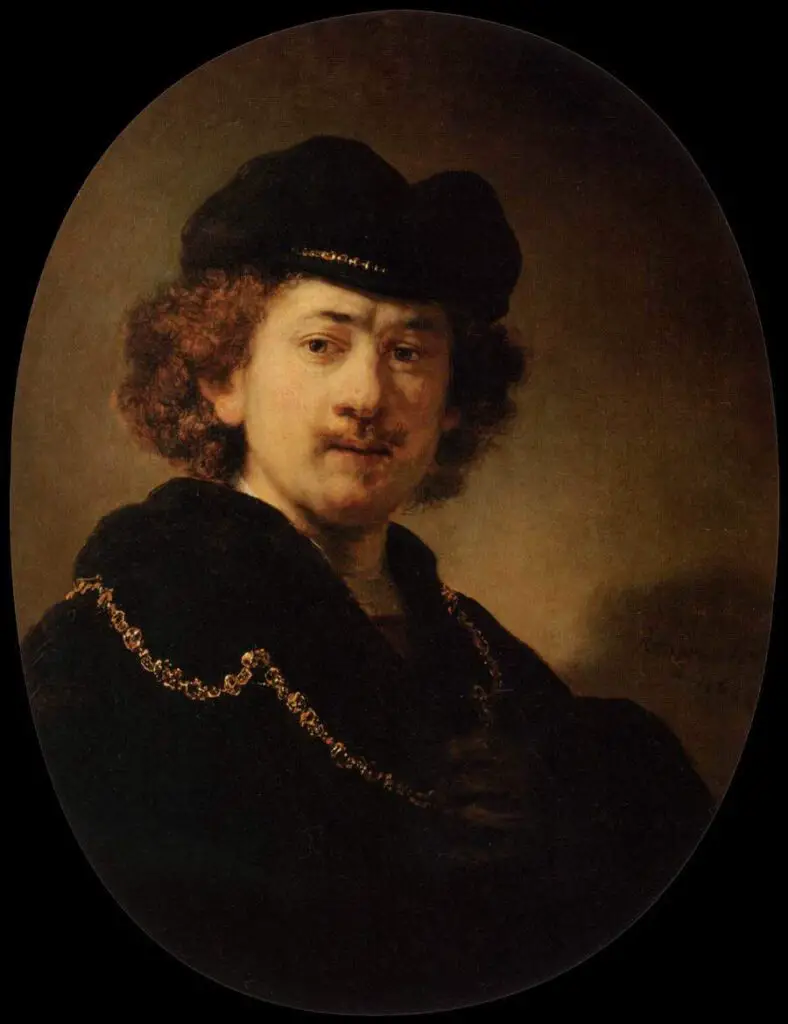
11. Self-Portrait – c. 1634
Oil on panel, 71 x 55 cm
Private collection
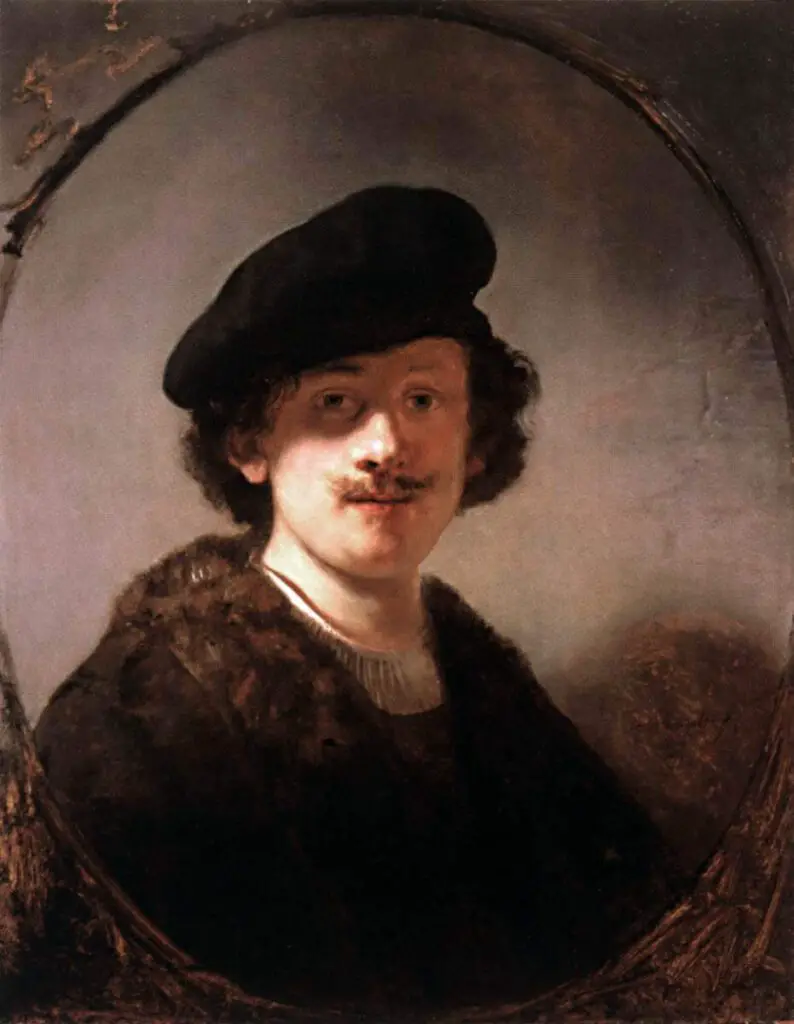
12. Self-Portrait as a Young Man – c. 1634
Oil on wood, 62 x 54 cm
Galleria degli Uffizi, Florence
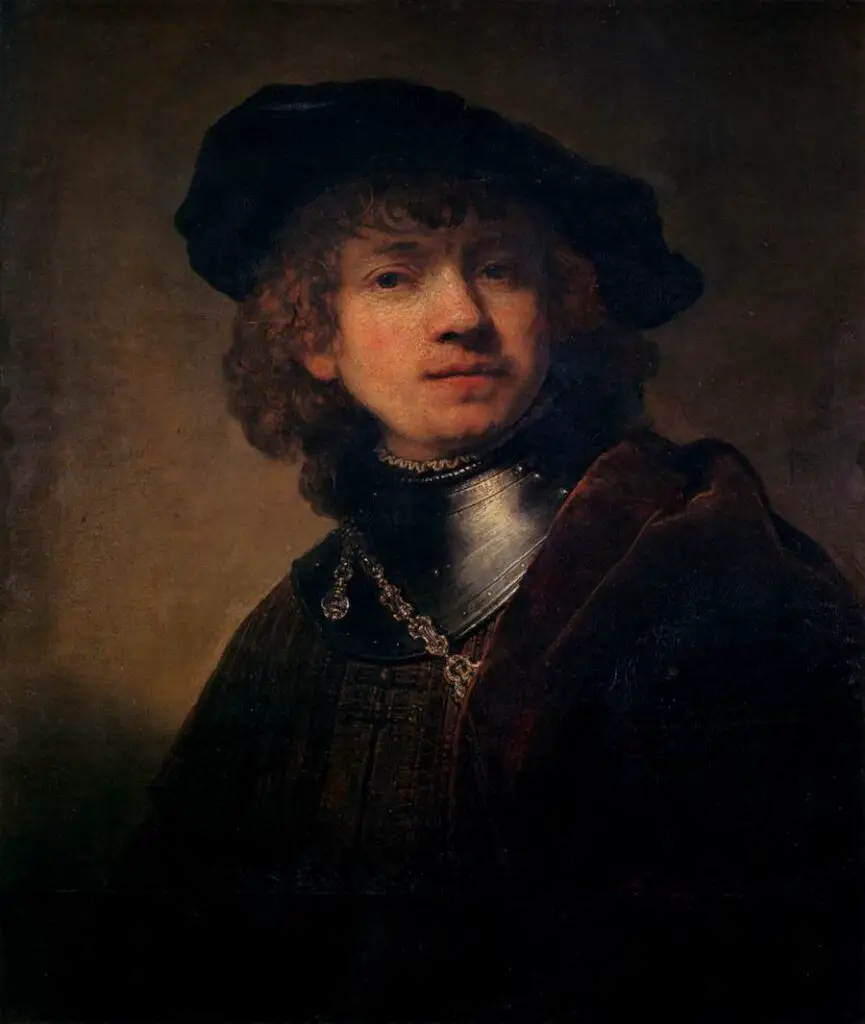
13. Self-Portrait with Velvet Beret and Furred Mantel – c. 1634
Oil on oak, 58 x 48 cm
Staatliche Museen, Berlin

14. Portrait of Rembrandt with Gorget and Helmet – c. 1634
Oil on panel, 84 x 61 cm
Staatliche Museen, Kassel

15. Self-Portrait – c. 1640
Oil on canvas, 102 x 80 cm
National Gallery, London
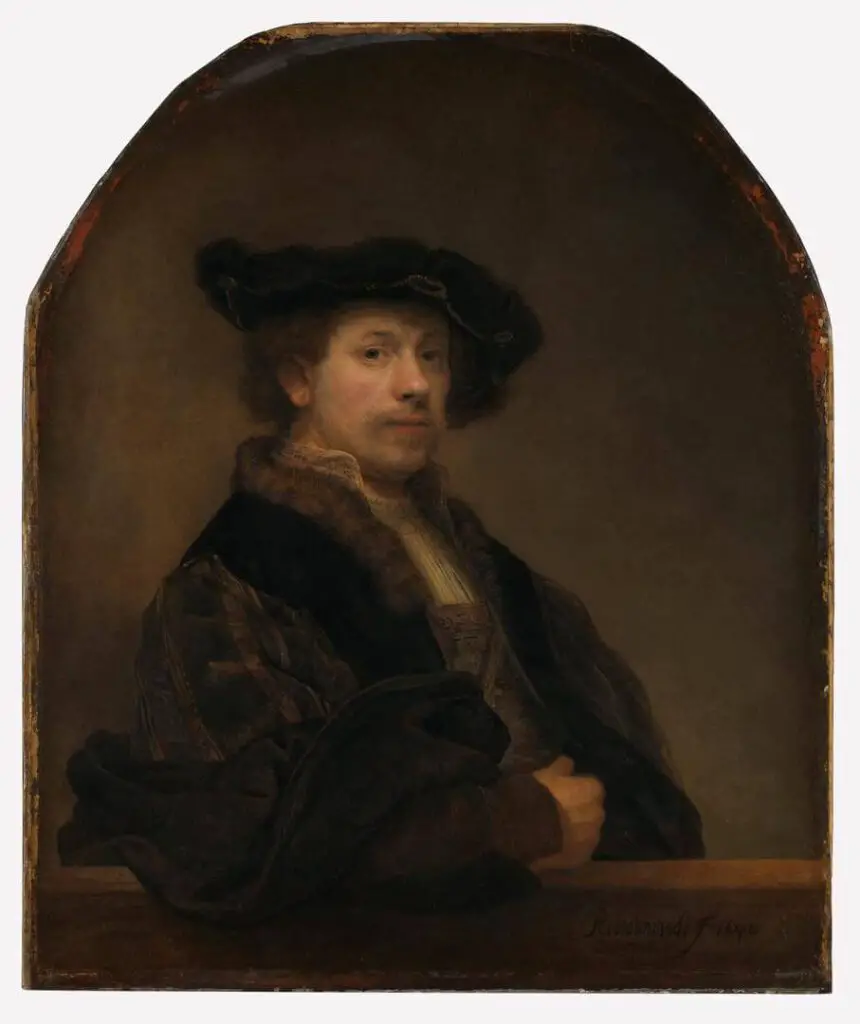
16. Self-Portrait – c. 1640
Oil on panel, 72 x 55 cm
Museo Thyssen-Bornemisza, Madrid
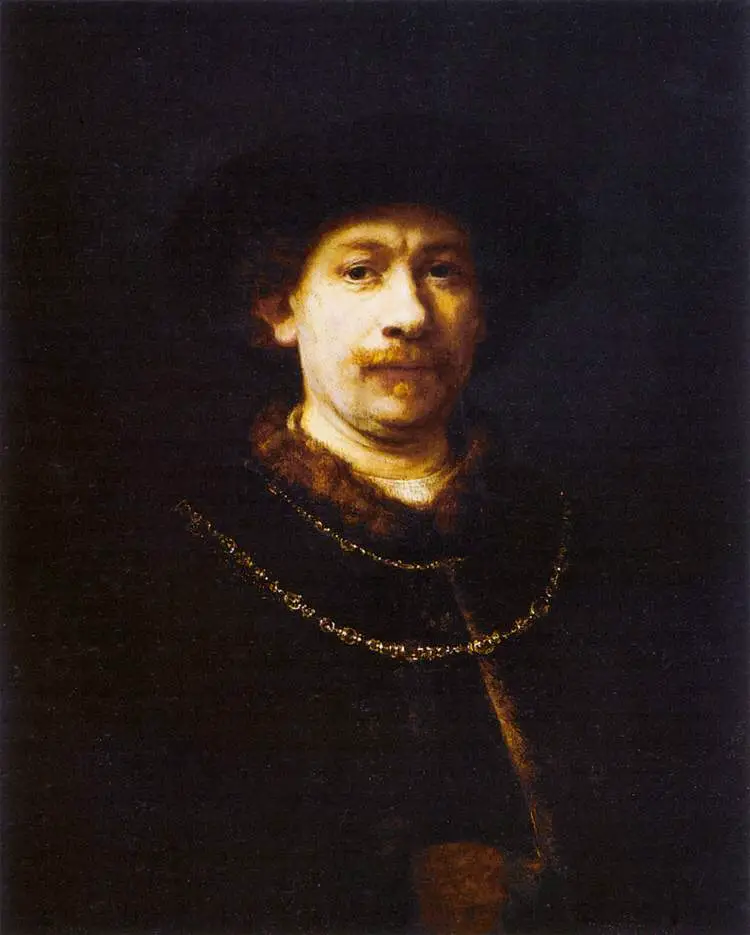
Listen To Our Podcast About Exploring The Self-Portraits Of Rembrandt below or by clicking here.
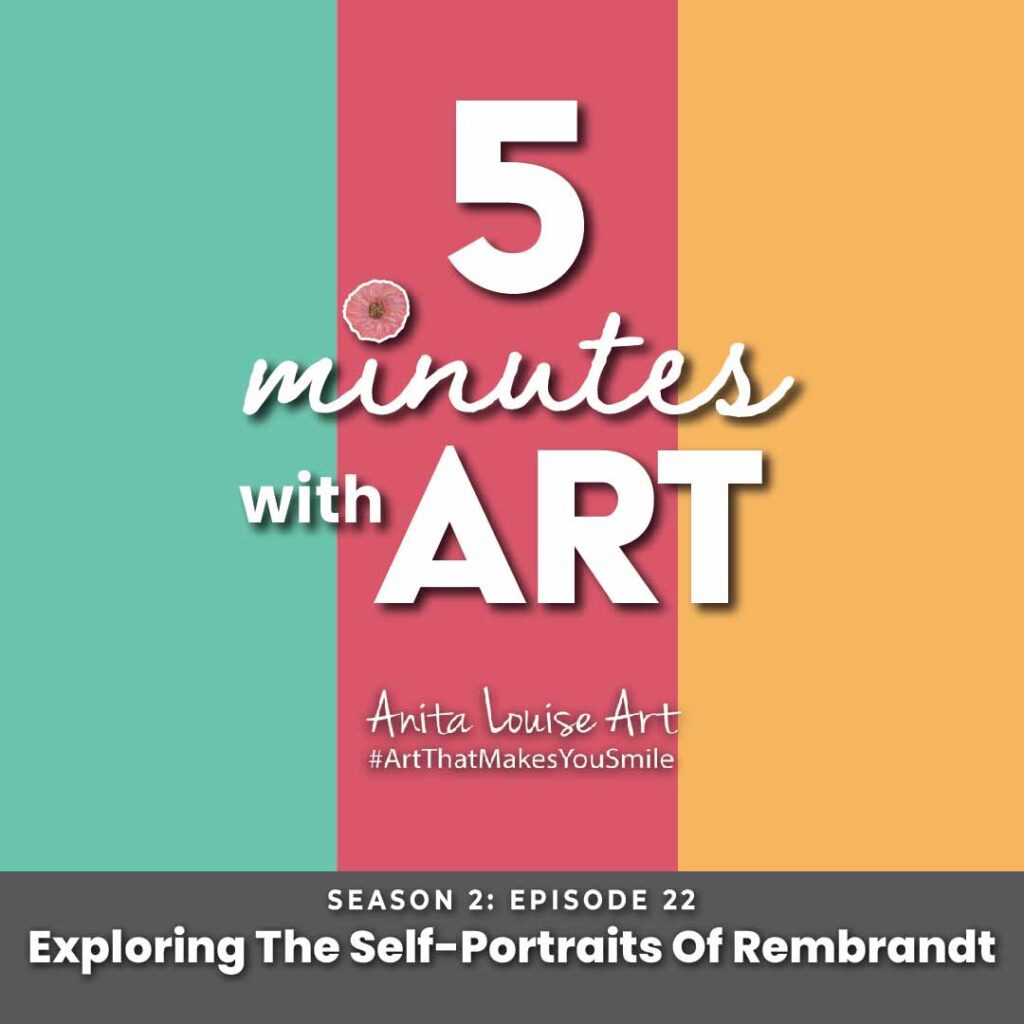
17. Little Self-Portrait – c. 1657
Oil on wood, 49 x 41 cm
Kunsthistorisches Museum, Vienna

18. Self-Portrait – c. 1658
Oil on canvas, 134 x 104 cm
Frick Collection, New York
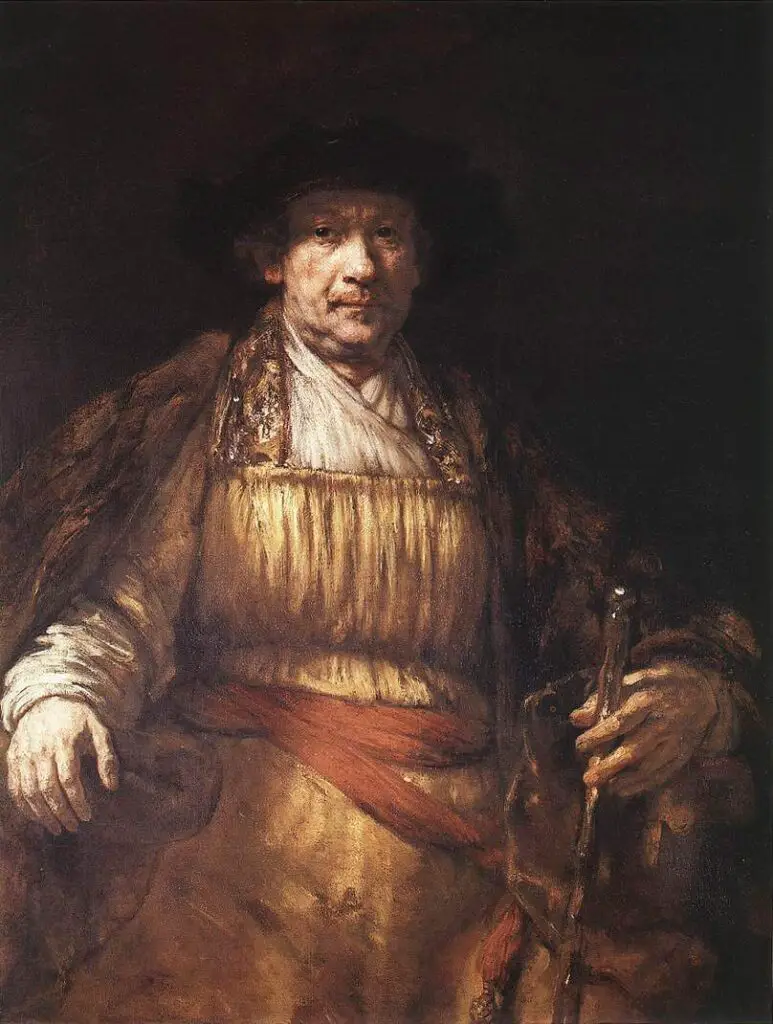
19. Self-Portrait – c. 1659
Oil on canvas, 85 x 66 cm
National Gallery of Art, Washington
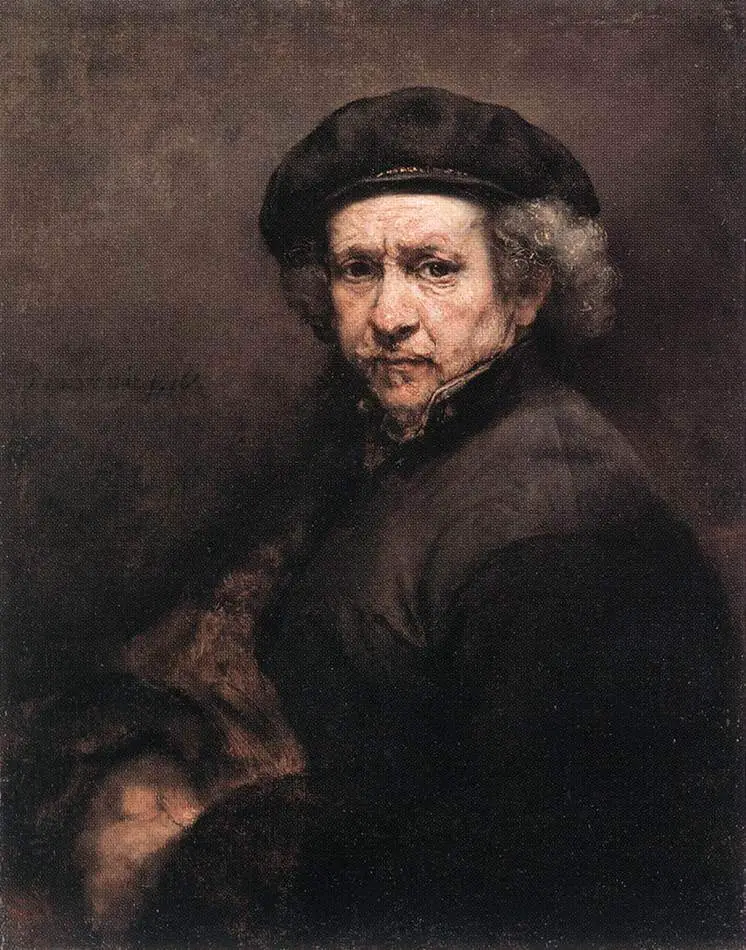
20. Self-Portrait – c. 1660
Oil on canvas, 80 x 67 cm
Metropolitan Museum of Art, New York
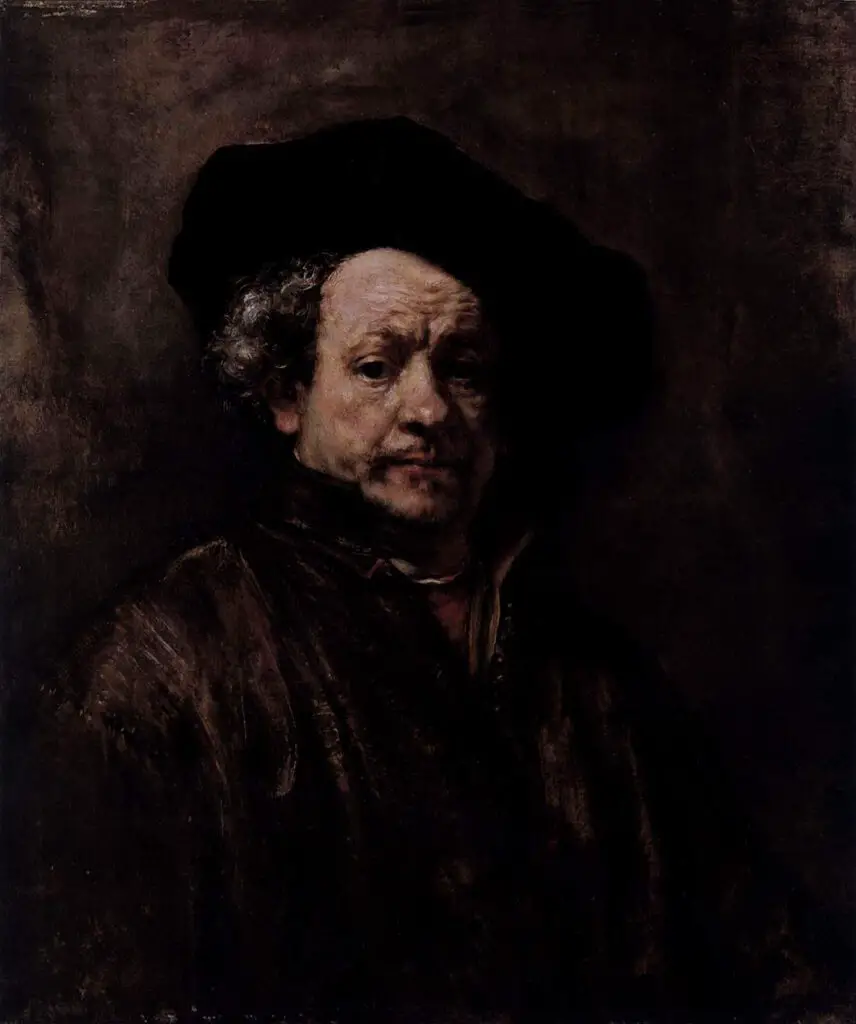
21. Portrait of the Artist at His Easel – c. 1660
Oil on canvas, 111 x 85 cm
Musée du Louvre, Paris
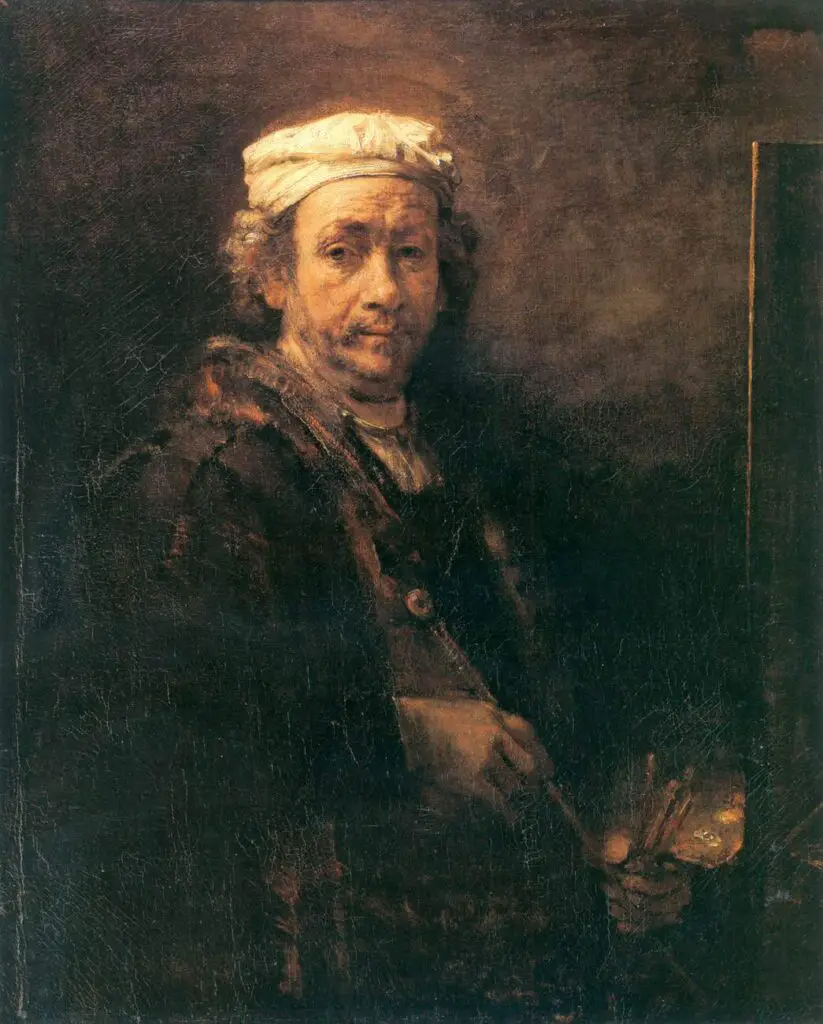
22. Self-Portrait – c. 1661
Oil on canvas, 114 x 94 cm
Iveagh Bequest, Kenwood House, London
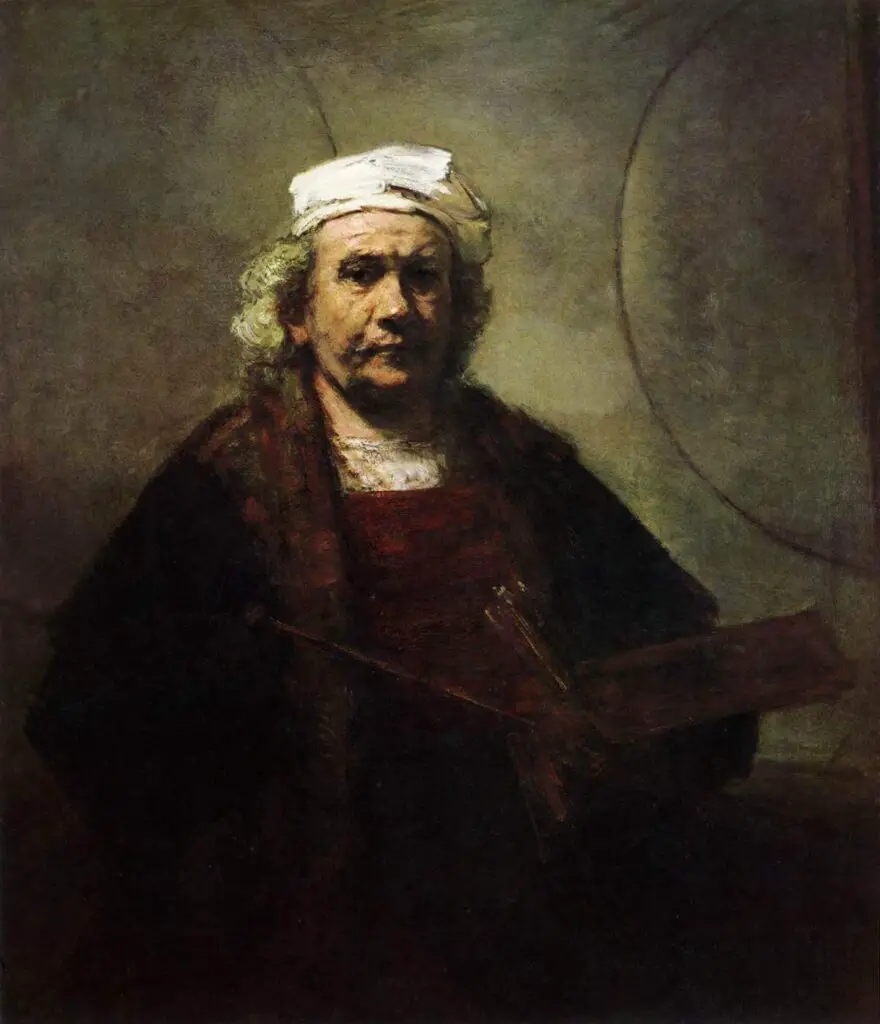
23. Self-Portrait as the Apostle Paul – c. 1661
Oil on canvas, 91 x 77 cm
Rijksmuseum, Amsterdam
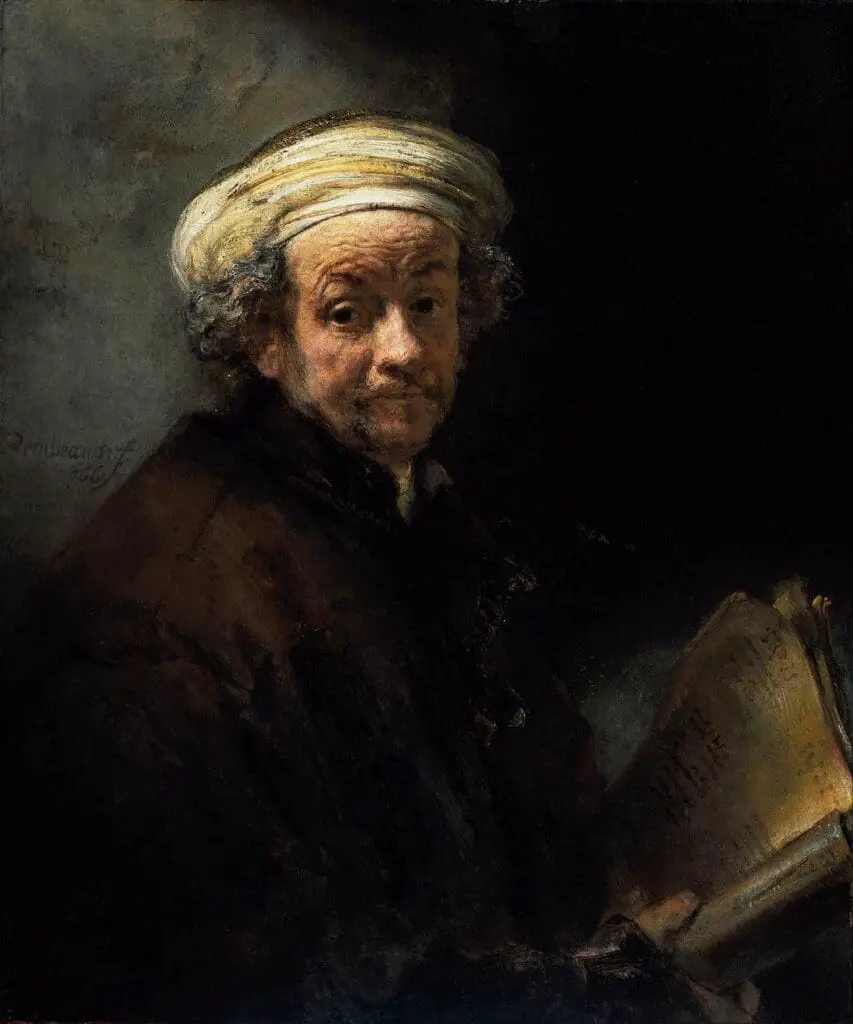
24. Self-Portrait – c. 1668-69
Oil on canvas, 82,5 x 65 cm
Wallraf-Richartz-Museum, Cologne
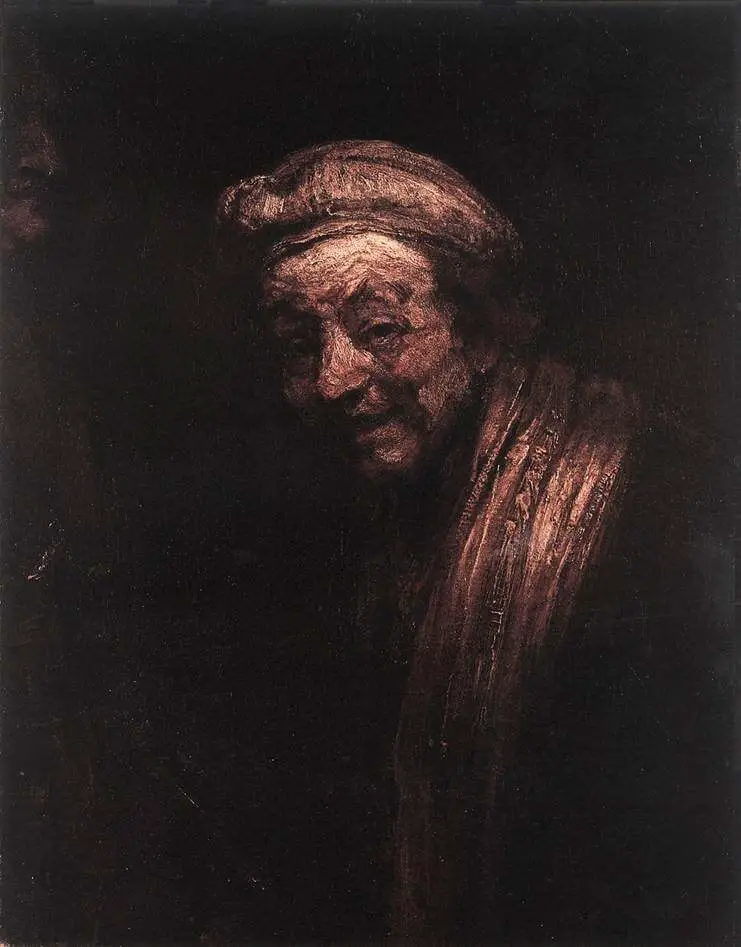
25. Self-Portrait – c. 1669
Oil on canvas, 71 x 54 cm
Galleria degli Uffizi, Florence
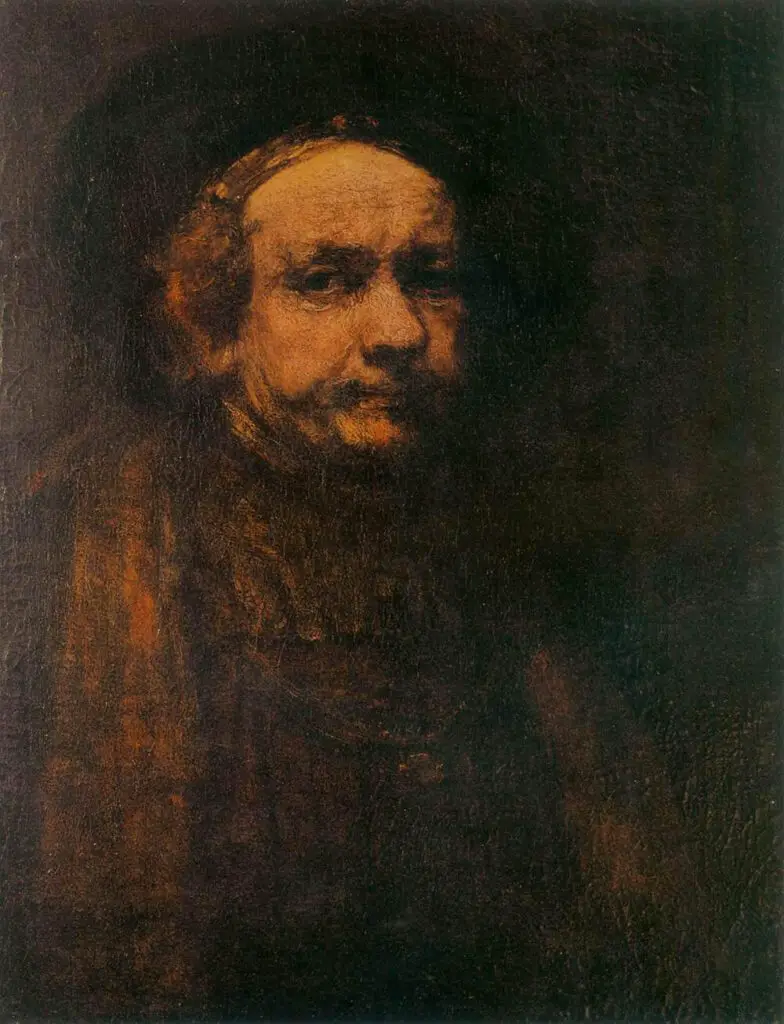
26. Self-Portrait – c. 1669
Oil on canvas, 86 x 71 cm
National Gallery, London
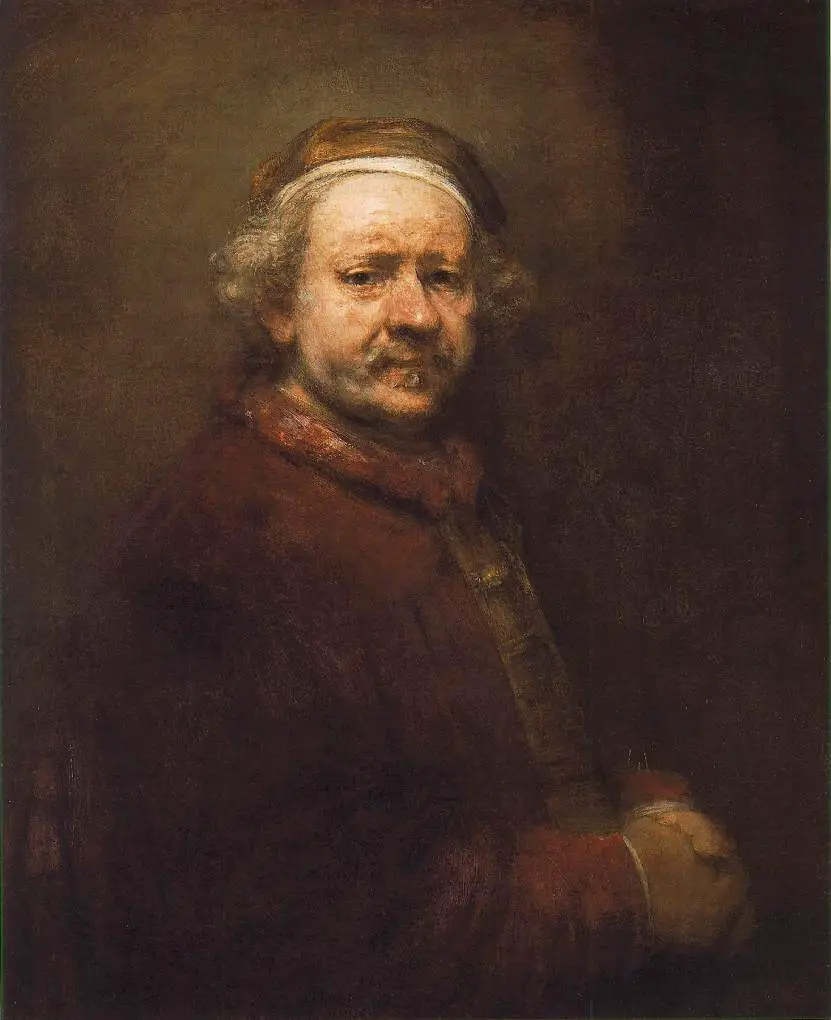
27. Self-Portrait – c. 1669
Oil on canvas, 65 x 60 cm
Mauritshuis, The Hague
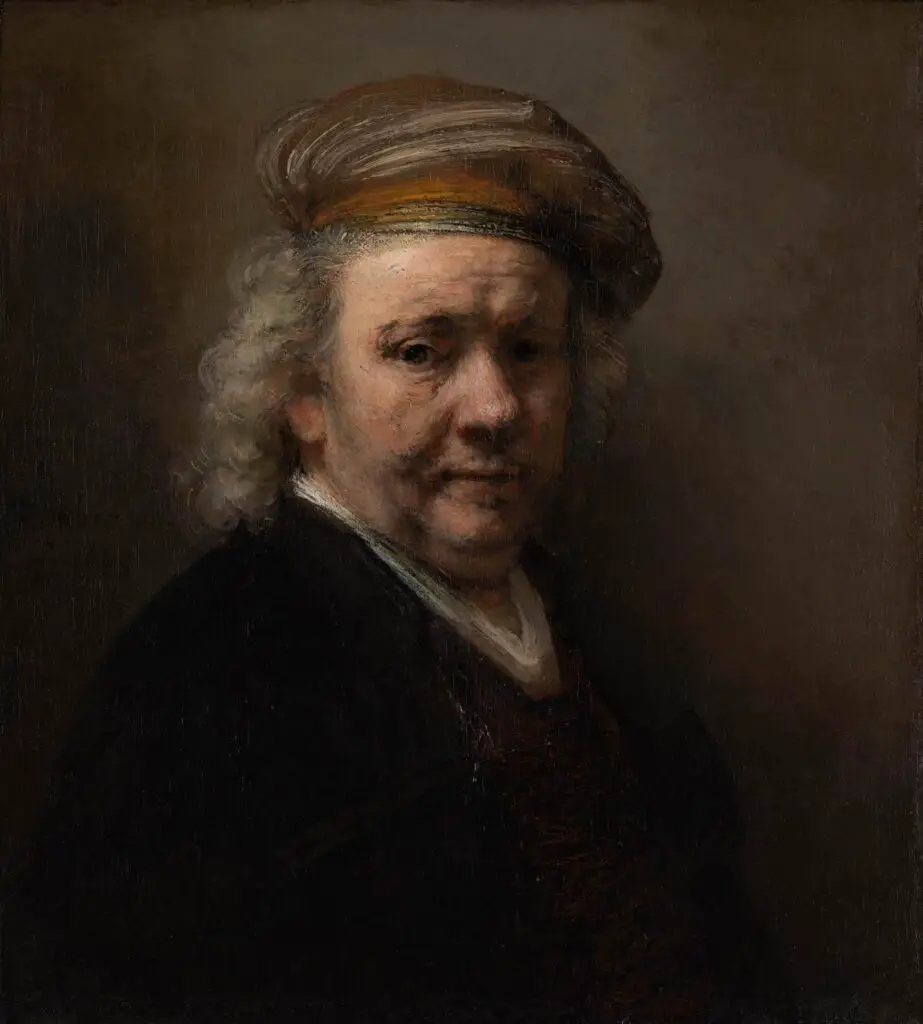
The self-portraits of Rembrandt van Rijn leave an indelible mark on the art world, revealing the artist’s remarkable ability to transcend his physical appearance and delve into the realms of emotion, narrative, and introspection.
Rembrandt captivates viewers through his masterful use of light, shadow, and expressive brushwork, inviting them to embark on self-reflection and connection. The self-portraits of Rembrandt are not merely reflections of the artist himself but windows into the complexity and universality of the human condition.
As we explore and view these significant self-portraits chronologically, we gain a deeper appreciation for Rembrandt’s mastery, relentless pursuit of artistic expression, and everlasting impact on the art world.
You can discover more about the life and great painting of Rembrandt by clicking here.
Frequently Asked Questions
What is the earliest known self-portrait of Rembrandt, and what insights does it provide into the artist’s early career?
Rembrandt’s earliest self-portrait, painted around 1629-1631, reveals a young artist in the early stages of his career. Explore how this early work sets the stage for Rembrandt’s future artistic development.
How did Rembrandt’s self-portraits evolve over time, and what notable changes can be observed in his technique and style?
Take a chronological journey through Rembrandt’s self-portraits to witness the evolution of his artistic technique and style. Discover the subtle and dramatic shifts that occurred over the years, reflecting his growth as an artist.
What role did light and shadow play in Rembrandt’s self-portraits, and how did he master the use of chiaroscuro to convey depth and emotion?
Delve into the technical aspects of Rembrandt’s self-portraits, exploring his mastery of chiaroscuro (light and shadow). Understand how he skillfully used these elements to add depth, drama, and emotion to his self-representations.
Which self-portrait of Rembrandt is considered the most iconic, and what makes it stand out among his extensive body of self-portraits?
Identify the self-portrait that is often regarded as Rembrandt’s most iconic. Uncover the unique elements that make this particular portrayal stand out, both in terms of artistic expression and historical significance.
How did Rembrandt use costume and props in his self-portraits to convey different roles and personas, and what cultural influences can be observed in these choices?
Explore the symbolic use of costume and props in Rembrandt’s self-portraits. Examine how these elements allowed the artist to adopt various roles and personas, reflecting both personal and cultural influences of his time.
What emotional range is depicted in Rembrandt’s self-portraits, and how did his personal experiences influence the expression and mood of these works?
Examine the emotional spectrum captured in Rembrandt’s self-portraits. Gain insights into how his personal life experiences, including triumphs and tribulations, manifested in the emotional depth and complexity of his self-representations.
Were there specific periods in Rembrandt’s life that significantly influenced the themes and content of his self-portraits?
Investigate whether certain periods in Rembrandt’s life had a profound impact on the themes and content of his self-portraits. Uncover how external factors, such as personal relationships and societal changes, shaped the narratives within his self-representations.
How did Rembrandt challenge traditional conventions of self-portraiture, and in what ways did he pave the way for a more introspective and experimental approach?
Consider how Rembrandt pushed the boundaries of traditional self-portraiture. Explore the ways in which he embraced introspection and experimentation, setting a precedent for future artists to explore their own identities through self-representation.
Which self-portrait of Rembrandt is the most enigmatic or open to interpretation, and what theories exist regarding its meaning?
Identify the self-portrait that remains particularly enigmatic, inviting various interpretations. Explore the theories and speculations surrounding the meaning behind this mysterious portrayal, adding an extra layer of intrigue to Rembrandt’s body of work.
How have Rembrandt’s self-portraits influenced subsequent generations of artists, and what aspects of his approach continue to resonate in contemporary art?
Examine the enduring impact of Rembrandt’s self-portraits on the art world. Investigate how his innovative techniques and profound introspection have inspired and influenced later generations of artists, shaping the trajectory of self-portraiture in contemporary art.
Anita Louise Art is dedicated to art education, great artists, and inspiring others to find and create their art. We love art that uplifts and inspires. #ArtToMakeYouSmile! #ArtToMakeYouHappy!
If you are interested to see any of my art, you can find out more by clicking here. If you are interested in what inspires me and my paintings, you can discover more by clicking here.
We have a free newsletter and would love you to be part of our community; you can subscribe to the newsletter by clicking here. If you have any questions, I would be happy to talk to you anytime. You can reach me, Anita, by clicking here.
Subscribe to our Anita Louise Art YouTube Channel with great videos and information by clicking here.
Related Questions
What Are The Characteristics Of Mannerism Art?
Mannerism was an art movement filled with elongated bodies, tiny heads, and human figures in twisted forms. Perspective and proportion were unnecessary, but colors, contrasts, virtuosity, and agitated compositions were essential.
By clicking here, you can learn more by reading What Are The Characteristics Of Mannerism Art?
What Was The Focus Of Renaissance Art?
Renaissance art focused on the classics of Greek and Rome, humanist philosophy, and the study of the human figure. Realism was also an essential part of Renaissance art. The great artists of the Renaissance also became great anatomists and studied human beings.
By clicking here, you can learn more by reading What Was The Focus Of Renaissance Art?.
What Are The Major Periods In Western Art History?
The significant Western art history periods are defined as Prehistoric Art, Ancient Art, Medieval Art, the Renaissance, Mannerism, Baroque, Rococo, Neoclassicism, Romanticism, Realism, Art Nouveau, Impressionism, Post – Impressionism, Fauvism, Expressionism, Cubism, Surrealism, Abstract Expressionism, Op Art, Pop Art, Arte Povera, Minimalism, Conceptual Art and Contemporary Art.
By clicking here, you can learn more by reading What Are The Major Periods In Western Art History?.

